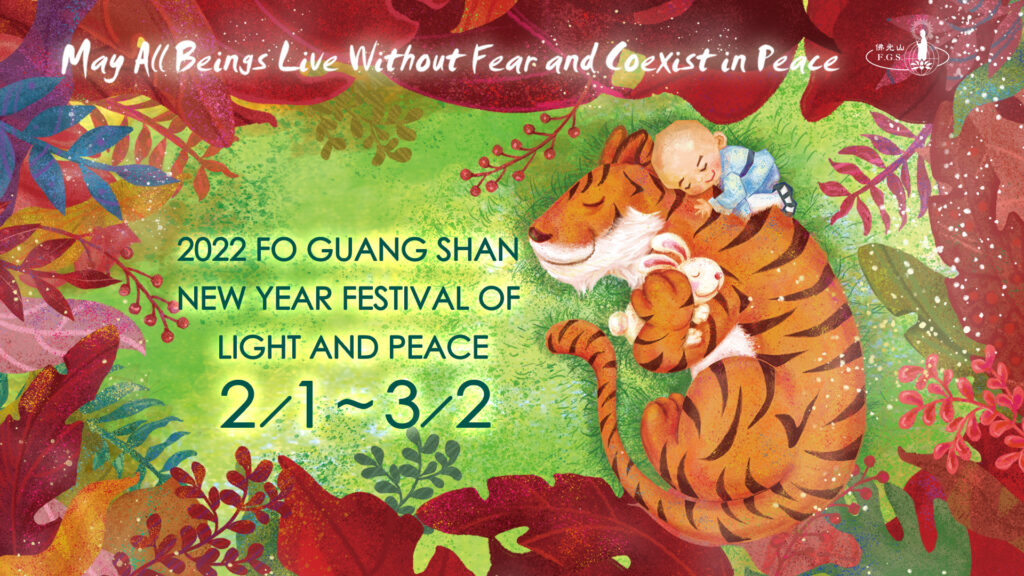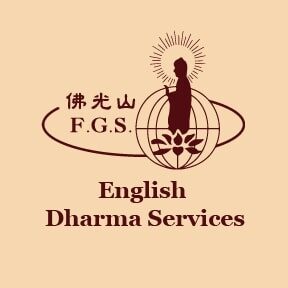
I. Introduction
Auspicious greetings to you and happy new year! In just two days, we will be celebrating Lunar New Year, which is the most important festival in Chinese culture. Do Buddhist monasteries celebrate Lunar New Year? Yes, we do! In this special episode, allow me to take you on a virtual tour through Fo Guang Shan Monastery and celebrate Lunar New Year.
II. Lunar New Year and Buddhism
Lunar New Year is also known as the Spring Festival. Chinese calendar is not only a lunisolar calendar, it is also an agricultural calendar that tracks the four seasons so that farmers know when it’s best for planting and harvest. The first day of Lunar New Year marks the arrival of spring. After months of cold and darkness, the Earth is finally revived by the warm and gentle spring breeze. Flowers begin to blossom on bare branches, and little birds come chirping and hopping back to their nests. Not only is the natural environment coming back to life and bursting with new energy, it is also a wonderful opportunity to start anew.
As Venerable Master said in the new year greeting, let us put the past in the past and turn over a new leaf in our lives. Whatever flaws we have before, now is the time for change. The beauty of life is that improvement and growth is possible. Thus, we have endless potential to fulfill our hopes and dreams and strive for a better future.
How do we celebrate Lunar New Year at Fo Guang Shan? Every year, the monastery organizes a month-long New Year Festival of Light and Peace. Since 1980, Fo Guang Shan has been welcoming visitors and devotees with colorful lantern displays, parades, and Dharma services. You are welcome to visit one of Fo Guang Shan branch temples to enjoy the festivities and experience Chinese culture.
Lunar New Year and Buddhism go a long way back to the year 71. It was the Eastern Han dynasty, and Buddhism was a new religion in China. The emperor was supportive of Buddhism and to show the magnanimity and sublimity of Buddhism, the emperor ordered that bright and colorful lanterns were hung all over the city on the 15th day of the new year. Since then, lanterns have become a trademark of Lunar New Year, and you will see many bright red ones hanging not just in temples, but everywhere on the streets and in people’s homes.
Light is a universal symbol of hope, illumination, and enlightenment, and especially so in Buddhism. As the Buddhist saying goes, “A single light can dispel the darkness of a thousand years.” Light counteracts all darkness, no matter if it is external or internal darkness. Just as spring brings the sun back again to shine warmly on all forms of lives, the Buddha is the light that dispel the ignorance within us and brings hope to our hearts.
III. New Year Festival of Light and Peace
The offering of light has great merits, and one can dedicate this merit not only to oneself, but to loved ones. One can also make a great vow and offer this light to the society, country, and even to all sentient beings and hope that everyone will one day be liberated from the darkness of afflictions and ignorance and attain the great enlightenment.
When you visit the monastery, you might also see people offering incense. Incense is also one of the ten offerings in Buddhism, and it is a long-standing tradition for people to offer an incense on Lunar New Year. When offering incense, we are standing before the buddhas and bodhisattvas with a sincere heart, expressing our innermost hopes and wishes. Not only can we pray for our loved ones, we can also dedicate this merit towards the people around us.
You can also strike the bell during Lunar New Year. The bell is a sacred Dharma instrument in the monastery. Every morning and night, the monastery rises and rests with the solemn striking of the great bell. Other than this occasion, the great bell is only strike at the most important and rare Dharma functions. Lunar New Year is the only time of the year when the public is welcomed to strike the great bell. There is a Buddhist verse which one would recite when hearing the sound of the bell,
Upon hearing the striking of the bell, may my afflictions lessen, May I give rise to wisdom and bodhi mind, May I escape from the lower realms and fiery pits, May I attain buddhahood and liberate all beings.
When striking the New Year Bell, we can vow, “May the sound of the great bell reverberates throughout the cosmos and bring peace and harmony to those who hear it.”
IV. The Year of the Tiger
Every new year, Venerable Master would write a spring greeting. This year’s greeting is “May All Beings Live Without Fear and Coexist in Peace.” According to Chinese zodiac, this is the year of the Tiger. Tigers are king of the jungle. They are fearless and brave. During these troubled times, may we all have the courage of a tiger to resolve any challenges that come our way. In Buddhism, there are three practices of generosity: the giving of wealth, the giving of Dharma, and the giving of fearlessness. Sometimes, our fears and worries overpower us. In such moments, we can rely on our faith in the Buddha, for his teachings can guide us out of our troubles.
Today, we see news after news of conflicts, be conflicts between people, society, or even nations. As the Buddha said, “Hate cannot resolve hate. Only kindness and compassion can.” If we could nurture a little bit more kindness and compassion within our hearts, and share it with others, not only we will find peace within us, we are also creating a harmonious society.
These few years have not been easy. May the light of the Buddha shine upon you, may you discover inner peace through the teachings of the Dharma, and may we build a more peaceful and harmonious world with loving-kindness and compassion. Let us continue to strive forward in this year of 2022. Omitofo.

